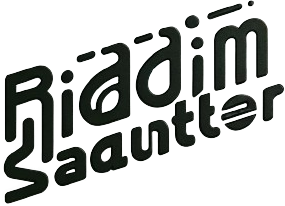Hey there! Have you ever wondered about the mysterious world of leaks? Well, I’m here to spill the beans on the fascinating phenomenon known as “6ar6ie6 of leak.” In this article, I’ll be diving deep into the secrets behind leaks, uncovering their causes, and exploring the impact they can have on various industries. So, buckle up and get ready for an eye-opening journey into the world of leaks!
Leaks, whether they occur in politics, technology, or entertainment, have always captivated our attention. They have the power to shape narratives, reveal hidden truths, and even change the course of history. But have you ever stopped to wonder how leaks happen in the first place? That’s exactly what we’ll be exploring in this article. From whistleblowers to hacking incidents, we’ll uncover the different sources and methods behind leaks, shedding light on the mechanics of this intriguing phenomenon.
Understanding Leaks
What are the causes of leaks in various industries?
Leaks in various industries can have multiple causes, including whistleblowers and hacking incidents. Whistleblowers expose sensitive information while hacking incidents involve unauthorized access to data. These leaks can happen in any sector, from government agencies to corporate organizations.
How do leaks impact industries?
Leaks have a profound impact on industries, influencing public perception and shaping narratives. They can uncover hidden truths and hold organizations accountable for their actions. Additionally, leaks can lead to legal consequences, financial losses, and damage to reputations for individuals and companies involved.
Can you provide some examples of impactful leaks?
Certainly! Here are a couple of examples:
- The Panama Papers – This leak in 2016 exposed a vast network of offshore accounts used for tax evasion and money laundering. It implicated numerous prominent figures from various industries, leading to investigations and widespread public outrage.
- Edward Snowden’s NSA leaks – Through his revelations in 2013, Snowden brought to light global surveillance programs conducted by the United States. His leaks sparked a global debate on privacy and government surveillance practices.
How do leaks shape narratives and reveal hidden truths?
Leaks have the power to challenge existing narratives and expose the truth behind closed doors. They provide journalists and researchers with valuable information that can uncover corruption, misconduct, or unethical practices. By revealing hidden truths, leaks contribute to transparency and accountability in society.
What can be done to prevent leaks in industries?
Preventing leaks requires a combination of robust security measures, proper employee training, and fostering a culture of trust and transparency within organizations. Implementing encryption protocols, restricting access to sensitive information, and conducting regular security audits can help minimize the risk of leaks.
In summary, understanding the causes and impacts of leaks is crucial for industries to mitigate risks and ensure the protection of sensitive information. Leaks can shape narratives, reveal hidden truths, and ultimately spark meaningful change in the way organizations operate.
The Impact of Leaks on Industries
Leaks have profound consequences for industries, affecting reputations and financial stability.
- Reputation damage: Leaks can tarnish a company’s image and erode consumer trust.
- Financial losses: Industries may face lawsuits, regulatory penalties, and a loss of customers and investors.
- Market volatility: Leaks can lead to stock price fluctuations and instability in the market.
- Competitive disadvantage: Rivals can exploit leaked information, gaining an edge in the market.
Some notable examples include:
- The 2014 Sony Pictures leak resulted in lawsuits and significant damage to their reputation.
- The 2017 Equifax breach exposed 143 million Americans’ personal information, leading to a massive settlement.
- The 2010 BP oil spill leak cost the company $65 billion in cleanup, compensation, and legal expenses.
To mitigate the impact:
- Robust security measures: Encrypt data, implement firewalls, and regularly update software.
- Employee training: Educate staff on data protection and the importance of confidentiality.
- Foster a culture of trust and transparency: Encourage open communication and reward ethical behavior.
Understanding the impact of leaks is crucial for industries to safeguard their operations, protect sensitive information, and maintain the trust of their stakeholders.
The Power of Leaks to Shape Narratives
When looking at the impact of leaks, it’s important to recognize their ability to shape narratives and influence public perception.
Leaks can:
- Reveal hidden information that may challenge existing narratives.
- Expose wrongdoing or unethical behavior that tarnishes reputations.
- Shift public opinion by highlighting information previously unknown.
For example, when the Panama Papers leak occurred, it exposed the offshore financial activities of many high-profile individuals, leading to public outrage and calls for greater transparency.
Through leaks, companies, governments, and individuals can lose control over the information presented to the public, allowing new narratives to emerge. This can significantly impact their public image and credibility.
In today’s digital age, leaks have become a powerful tool for whistleblowers, activists, and hackers to challenge the status quo and hold organizations accountable. Understanding this power is crucial for industries to navigate the challenges posed by leaks and proactively address any vulnerabilities.
Uncovering the Hidden Truths: Sources of Leaks
In this section, I’ll explore the various sources from which leaks can originate, shedding light on the hidden truths they reveal. Let’s delve into the question of what causes leaks and where they come from.
1. Whistleblowers: Individuals within organizations who expose wrongdoing and unethical practices.
2. Hacking: Cybercriminals infiltrating networks to obtain and publicize confidential data.
3. Disgruntled Employees: Dissatisfied staff members seeking revenge or attention by leaking sensitive information.
4. Journalists: Investigations by reporters can uncover secrets and hidden truths.
5. Anonymous Sources: Informants who wish to remain unidentified but provide valuable insider information.
6. Human Error: Accidental release of information due to carelessness or lack of proper protocols.
Each of these sources poses a unique threat to organizations, as their actions can lead to significant consequences such as lawsuits, regulatory penalties, and reputational damage.
Examples of impactful leaks:
- The Snowden Files: Edward Snowden’s leak of classified documents revealed widespread global surveillance by intelligence agencies.
- Panama Papers: An anonymous source leaked millions of documents, exposing the offshore financial activities of the wealthy and influential.
- WikiLeaks: The platform known for publishing classified information, whistleblowing, and challenging transparency in governments and organizations.
Understanding the sources of leaks empowers organizations to identify and address vulnerabilities, prioritize cybersecurity, and foster a culture of trust and transparency. By doing so, they can mitigate the risks and potential damage caused by leaks.
But how do these leaks impact industries and shape public perception? Let’s explore that in the next section.
The Mechanics Behind Leaks: Methods and Techniques
How do leaks occur?
Leaks can occur through various methods and techniques, each with its own intricacies and potential impacts. Here are some common ways leaks happen:
- Whistleblowers: Individuals within an organization who expose sensitive information to the public, often motivated by a sense of injustice or wrongdoing.
- Hacking: Cybercriminals illegally gaining access to confidential data and releasing it to the public or other unauthorized parties.
- Disgruntled employees: Employees who, for various reasons, decide to leak sensitive information as an act of revenge or to expose wrongdoing.
- Journalists: Reporters who receive confidential documents or information from anonymous sources and choose to publish them.
- Anonymous sources: Individuals who provide sensitive information to journalists or other organizations without revealing their identity.
- Human error: Accidental disclosures of confidential information due to negligence, lack of training, or improper handling of data.
Why is it important to understand these methods?
By understanding how leaks can occur, organizations can better identify vulnerabilities and implement measures to prevent or mitigate the risks and potential damage caused by leaks. Knowing the methods and techniques behind leaks allows for a more targeted approach to cybersecurity and risk management.
Impacts of leaks in industries
Leaks can have far-reaching impacts across various industries. Here are a few examples:
- In the government sector, leaks can expose classified information, compromise national security, and damage public trust in institutions.
- In the corporate world, leaks can result in financial losses, damage reputation, and lead to legal consequences.
- In the media industry, leaks can uncover scandals, spur public debate, and influence the outcome of political or social issues.
Understanding the mechanics behind leaks and their implications is key to safeguarding sensitive information, ensuring data privacy, and maintaining trust in organizations.
Conclusion
Understanding the methods and implications of leaks is essential for protecting sensitive information and maintaining trust in organizations. In this article, we explored various avenues through which leaks can occur, including whistleblowers, hacking, disgruntled employees, journalists, anonymous sources, and human error.
By recognizing these methods, we can identify vulnerabilities and implement preventive measures to mitigate the risks associated with leaks. This knowledge is particularly crucial in industries such as government, corporate, and media sectors, where leaks can have far-reaching consequences.
Safeguarding data privacy and preventing leaks requires a proactive approach that includes robust security measures, employee training, and regular assessment of vulnerabilities. By staying informed and proactive, organizations can reduce the likelihood of leaks and the potential damage they can cause.
Remember, leaks can happen to any organization, so it’s important to prioritize data protection and implement best practices to maintain the confidentiality of sensitive information. By doing so, we can ensure the security and trustworthiness of our organizations in an increasingly interconnected world.
Frequently Asked Questions
1. What does the article discuss?
The article discusses various methods and techniques behind leaks, including whistleblowers, hacking, disgruntled employees, journalists, anonymous sources, and human error.
2. Why is it important to understand these methods?
Understanding these methods helps identify vulnerabilities and implement measures to prevent or mitigate risks and potential damage caused by leaks.
3. What industries are impacted by leaks?
Leaks impact various industries, including government, corporate, and media sectors.
4. Why is understanding leaks crucial?
Understanding leaks is crucial for safeguarding sensitive information, ensuring data privacy, and maintaining trust in organizations.




